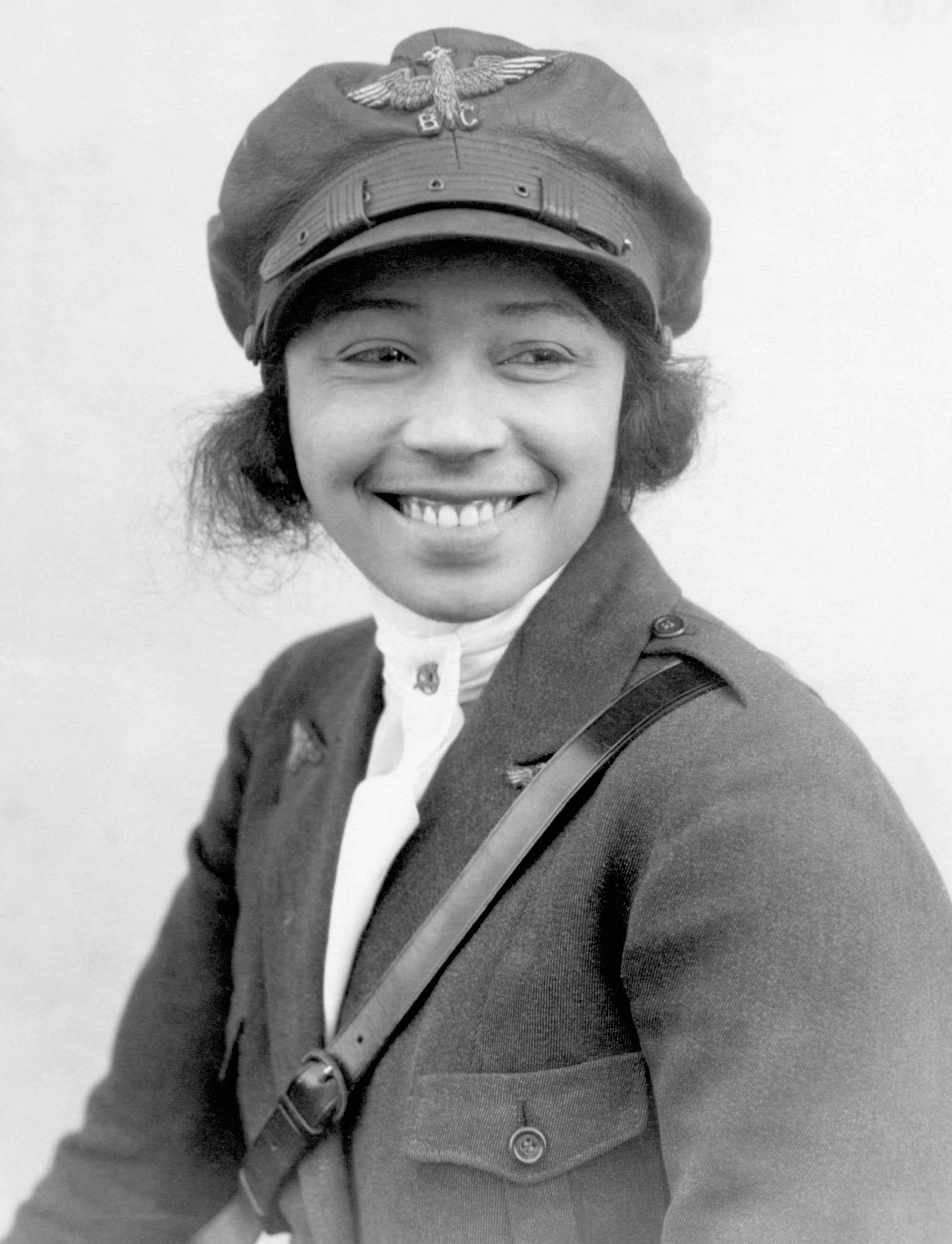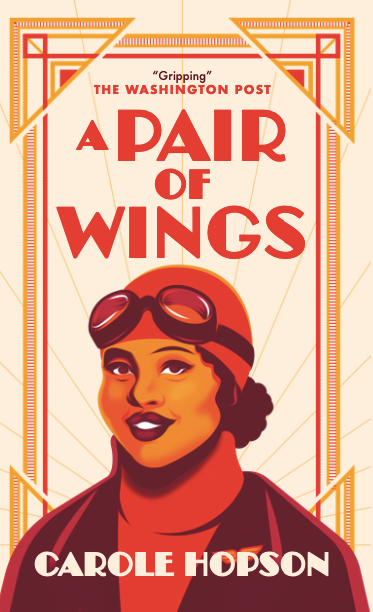Becoming a pilot seemed “ridiculous, impossible” after she finished high school.
But Carole Hopson is living proof that the seemingly impossible isn’t necessarily a barrier.
She remained resolutely determined to fullfil her dream — for decades.
And after a 20-year career as a journalist and brand executive, she eventually became a United Airlines pilot at the age of 50 and today is one of only around 150 professional Black female pilots in the United States. That’s less than one percent of all pilots in the country.
The 60-year-old, who lives in New Jersey, reveals that she is highly “internally driven”, but also recalls how she was inspired by pioneering pilot Bessie Coleman, who in 1921 became the first African American woman to earn a flying license.
She first learned of Bessie’s story when she attended a Women in Aviation conference and was given a coffee cup by a friend decorated with Bessie’s portrait on one side and a mini biography on the reverse.
“Those 50 words have changed my life,” says Carole, who couldn’t believe there was so little in the public domain about this daughter of a Texas slave who would one day be called Queen Bess.
Carole was instantly inspired, telling The Independent: “She did what I wanted to do. But she was learning to fly at a time when American women were getting the right to vote.”
In response to her moment of inspiration, Carole has penned a historical novel called A Pair of Wings (Cassava Republic) that charts Bessie’s pathway to the skies.
Carole explains: “Here’s a woman who was in the wave of the first African Americans to go from the South to the North. She was part of the great migration.

“They moved from slavery to an agricultural area where they worked farms and even became sharecroppers to the Industrial Revolution as World War One happened.
“These are the people who made everything that made the war go, from the clothes and the munitions and the armaments and the shoes to everything else.
“Anyway, at 26 she wants to fly so badly she learns French at night. By 29 she’s conversant. Then she goes over to France on an ocean liner, past crumbling lighthouses in the North Atlantic, and learns how to fly from dog fighters in the First World War.”
She eventually returned to the US and forged a career in exhibition flying.
“This is a remarkable human being,” says Carole, “so why don’t we know about her? That’s an outrage.”
Carole describes A Pair of Wings as “an attempt to remedy Bessie’s absence from our historical memory of women who accomplished extraordinary feats”. And to write it, Carole went to almost every site that Bessie journeyed to. She took biplane lessons, so that she could know what flying aeroplanes from another era was really like, and visited cotton farms so that she could learn about growing and harvesting.
Carole adds: “Everything about Bess inspired me to not say no, but to say, ‘I need to go forward.'”

The United pilot’s own story begins at the age of just four, when she recalls visiting her grandmother’s house in South Jersey and gazing at planes flying overhead as she lay in the garden.
She recalls: “I would fantasize about those planes, ‘Where were those people coming from? Where were they going? What were they eating? Eating was a big thing. Who and how many people were upfront in that great big window office in the sky? How many engines were there? And what kind of airplanes were they?’
“And my grandmother would come out and she would take a piece of paper and teach me how to chart how many airplanes were coming and where they were coming from.
“And that started two things, my wanderlust and curiosity. And then later, when I was 11, 12, 13 years old, that became my excuse to get out of chores – I had to go watch the planes.”
Fast forward to the end of Carole’s time at college and she remembers becoming a pilot being a flight of fantasy.
She reveals: “I worked throughout college and finished and flying just seemed ridiculous, it seemed impossible.
“I became a newspaper reporter, a police reporter… and one day I went out on a date with my husband to be and asked me what I wanted to do.
“I was 30 years old and it was the first time I’d ever let it leave my lips. I said, ‘I want to fly an airplane.’ And he said, ‘Wow. I never knew that about you.'”
Taking note, he bought her surprise gift certificates to a local flight school.
Carole recalls describing the flight experience as “orgasmic” to her husband and at the age of 36 she enrolled in flight school full-time, graduating at the age of 37 in 2001 after the couple had moved from New York to New Jersey.
But when September 11 happened, the couple took stock, with Carole’s husband suggesting that they have children while waiting for the aviation industry to recover.
They had two boys when Carole was 38 and 40, two boys who would put her flying career in a holding pattern.
Carole reveals: “I fell completely in love with them, and I blinked. Flying was so much less important than making sure I did a good job with these two little ones.
“But I continued to fly as an instructor, which gave me a lot of flexibility. I could run over to the airport, fly a two-hour flight and come back, for instance. I didn’t have to have the arduous career of, say, leaving on Monday and coming back on Thursday.”
She continues: “I closed my eyes — and 14 years passed right by. By the time my kids were in middle school, I had turned 50.”
.png)
The dream of being a full-time commercial pilot was still there, though, and Carole said to her husband, “It’s now, or it’s never.”
Having not only been a journalist but also an executive for iconic brands like the National Football League, Foot Locker, and L’Oréal Cosmetics for over two decades, Carole applied to United Airlines for a job and was offered a role as a pilot for United Express, the carrier’s regional arm.
She then went on to become a United first officer on a Boeing 737 aged 54, earning her captain’s stripes in 2022 and flying to destinations including the Caribbean, Mexico and Central America.
She describes United as “wonderful”, adding: “United is the best of the major airlines, in my opinion, and that’s why I sought it.”
Carole reveals that passengers often mistake her for cabin crew, but reasons: “That just lets me know our cabin crew is fantastically dressed and lovely, and that means that that’s what they think I am.

“And I’m so internally driven that those things are not distractions for me. I have a job to do, and it’s to keep people safe, and that’s what United has hired me to do. And I am not distracted from that mission one iota.”
What would Carole say to a Black woman who wants to follow in her footsteps and become a pilot?
She replies emphatically: “Good God, do it. Here’s the first thing you need to do — take a discovery flight and find out if this is for you, because this field will self-select.
“If this is not for you, you will know, and if it is for you, join every one of the organizations, from the National Gay Pilots Association to the Organization of Black Aerospace Professionals and Women in Aviation. They are amazing. They give out scholarships, provide mentors, and they will show you the path — breadcrumbs along the way. You don’t have to do it from scratch. This is a wonderful time to explore and see that.”
Aspiring Black female pilots in America can also contact Carole’s Jet Black Foundation.
She explains: “My goal is to send 100 Black women to flight school by 2035. Why? I believe that we’re a talent pool that has never been sourced.
“It’s a great talent pool. I think we’re built for this mission, and I think we should be a talent pool that gets sourced. So, the Jet Black Foundation. We have a pilot shortage.
“Now is the time.”
- A Pair of Wings by Carole Hopson is published by Cassava Republic.
